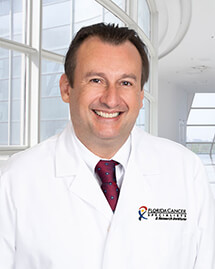Author(s): Mrinal M Gounder 1, Albiruni Abdul Razak 2, Neeta Somaiah 3, Sant Chawla 4, Javier Martin-Broto 5, Giovanni Grignani 6, Scott M Schuetze 7, Bruno Vincenzi 8, Andrew J Wagner 9, Bartosz Chmielowski 10, Robin L Jones 11, Richard F Riedel 12, Silvia Stacchiotti 13, Elizabeth T Loggers 14, Kristen N Ganjoo 15, Axel Le Cesne 16, Antoine Italiano 17, Xavier Garcia Del Muro 18, Melissa Burgess 19, Sophie Piperno-Neumann 20, Christopher Ryan 21, Mary F Mulcahy 22, Charles Forscher 23, Nicolas Penel 24, Scott Okuno 25, Anthony Elias 26, Lee Hartner 27, Tony Philip 28, Thierry Alcindor 29, Bernd Kasper 30, Peter Reichardt 31, Lore Lapeire 32, Jean-Yves Blay 33, Christine Chevreau 34, Claudia Maria Valverde Morales 35, Gary K Schwartz 36, James L Chen 37, Hari Deshpande 38, Elizabeth J Davis 39, Garth Nicholas 40, Stefan Gröschel 41, Helen Hatcher 42, Florence Duffaud 43, Antonio Casado Herráez 44, Roberto Diaz Beveridge 45, Giuseppe Badalamenti 46, Mikael Eriksson 47, Christian Meyer 48, Margaret von Mehren 49, Brian A Van Tine 50, Katharina Götze 51, Filomena Mazzeo 52, Alexander Yakobson 53, Aviad Zick 54, Alexander Lee 55, Anna Estival Gonzalez 56, Andrea Napolitano 8, Mark A Dickson 1, Dayana Michel 57, Changting Meng 57, Lingling Li 57, Jianjun Liu 57, Osnat Ben-Shahar 57, Dane R Van Domelen 57, Christopher J Walker 57, Hua Chang 57, Yosef Landesman 57, Jatin J Shah 57, Sharon Shacham 57, Michael G Kauffman 57, Steven Attia 58
Author Affiliations
1Memorial Sloan Kettering Cancer Center and Weill Cornell Medical College, New York, NY.2Princess Margaret Cancer Center, Toronto, Ontario, Canada.3The University of Texas MD Anderson Cancer Center, Houston, TX.4Sarcoma Oncology Center, Santa Monica, CA.5Fundacion Jimenez Diaz University Hospital, Madrid, Madrid, Spain.6Division of Medical Oncology, Candiolo Cancer Institute, FPO-IRCCS, Candiolo, Torino, Italy.7University of Michigan, Ann Arbor, MI.8Policlinico Universitario Campus Bio-Medico, Roma, Italy.9Dana-Farber Cancer Institute, Boston, MA.10Jonsson Comprehensive Cancer Center at UCLA, Los Angeles, CA.11The Royal Marsden NHS Foundation Trust and The Institute of Cancer Research, Sutton, United Kingdom.12Duke Cancer Institute, Durham, NC.13Fondazione IRCCS Istituto Nazionale dei Tumori, Milano, Italy.14Fred Hutchinson Cancer Research Center, Seattle, WA.15Stanford Cancer Institute, Stanford, CA.16Institut Gustave Roussy, Villejuif, France.17Institut Bergonié, Bordeaux, France.18Catalan Institute of Oncology, IDIBELL, University of Barcelona, Barcelona, Spain.19University of Pittsburgh Medical Center Hillman Cancer Center, Pittsburgh, PA.20Institut Curie, Paris, France.21Oregon Health & Science University, Portland, OR.22The Robert H Lurie Comprehensive Cancer Center of Northwestern University, Chicago, IL.23Cedars-Sinai Medical Center, West Hollywood, CA.24Centre Oscar Lambret and Lille University, Lille, France.25Mayo Clinic Rochester, Rochester, MN.26University of Colorado-Denver, Aurora, CO.27University of Pennsylvania, Philadelphia, PA.28Northwell Health Physician Partners, New Hyde Park, NY.29McGill University Health Centre, Montreal, Quebec, Canada.30Mannheim University Medical Center, Mannheim, Germany.31Helios Hospital Berlin-Buch, Berlin, Germany.32University Hospital Gent, Gent, Belgium.33Centre Leon Berard, Lyon, France.34Institut Claudius Regaud-IUCT-O, Toulouse, France.35Vall d’Hebron University Hospital, Barcelona, Spain.36Columbia University Irving Medical Center, New York, NY.37The Ohio State James Cancer Center, Columbus, OH.38Yale Cancer Center, New Haven, CT.39The Vanderbilt Clinic, Nashville, TN.40Ottawa Hospital Cancer Center, Ottawa, Ontario, Canada.41National Center for Tumor Diseases, University Hospital Heidelberg, Heidelberg, Heidelberg, Germany.42Cambridge University Hospitals NHS Foundation Trust, Cambridge, United Kingdom.43La Timone University Hospital Center and Aix-Marseille University, Marseille, France.44Hospital Universitario Clínico San Carlos, Madrid, Spain.45Hospital La Fe Valencia, Valencia, Spain.46Department of Surgical, Oncological and Oral Sciences, Section of Medical Oncology, University of Palermo, Palermo, Italy.47Skane University Hospital, Lund, Sweden.48Johns Hopkins, Baltimore, MD.49Fox Chase Cancer Center, Philadelphia, PA.50Washington University School of Medicine, St Louis, MO.51Klinik und Poliklinik für Innere Medizin III, Hämatologie und Onkologie Klinikum rechts der Isar der TU Muenchen, Marburg, Germany.52UCL Saint-Luc, Brussels, Belgium.53Soroka University Medical Center, Be’er Sheva, Israel.54Faculty of Medicine, Hebrew University of Jerusalem, Israel; The Oncology Department, Hadassah Medical Center, Jerusalem, Israel.55The Christie NHS Foundation, Manchester, United Kingdom.56Catalan Institute of Oncology (ICO) Germans Trias I Pujol University Hospital, B-ARGO, Barcelona, Spain.57Karyopharm Therapeutics Inc, Newton, MA.58Mayo Clinic, Jacksonville, FL.
